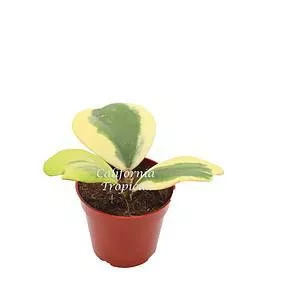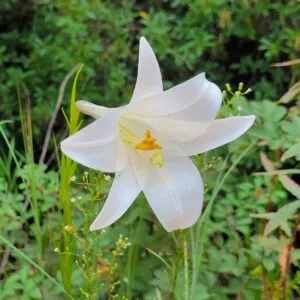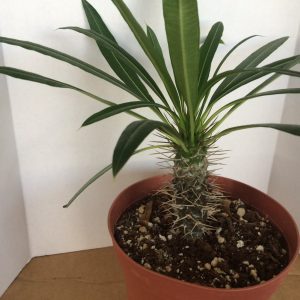No products in the cart.
Table of Contents
You must agree that succulent plants are just beautiful specimens with minimal care, like the Echeveria’ Azulita’. Yet, when happily stressed, the icy blue leaves turn pink. Is that not just amazing?
The leaves are fleshy and thick with a velvety texture making it very distinct from your other house plants. The best part is that it is a carefree yet adaptable succulent indoors and great for beginner plant parents.
So, if you are interested in becoming an Azulita plant parent, keep reading to find some helpful tips.
Echeveria Azulita Plant Care

The succulent plant is an exquisite beauty with its blue-green succulent leaves, waxy texture, and velvety feel. You can find some of the species covered with small hairs. The Little Blue One grows several tiny rosettes forming tight clusters.
On the other hand, you can find some Echeveria ‘Azulita’ species with foliage that varies in color from gray and lavender to blue-green. When spring arrives, it periodically blooms pink to orange flowers.
The flowers attract hummingbirds to your garden with many other pollinators like butterflies. The Echeveria’ Azulita’ grows up to five inches tall with a six-inch width. Another fact is that it is a hybrid of the Echeveria minima created by Renee O’Connell and native to Mexico.
The best part is when it comes to the care for Echeveria’ Azulita’. It is not that difficult.
Soil Mix Suitable for Your Succulent Plant
A top priority for the Azulita has proper drainage to prevent root rot. Hence, choosing the right containers with enough drainage holes is vital.
You may receive your new plant in a plastic container from the nursery and best to replant them into unglazed ceramic or terracotta pots. Next choose a succulent soil that contains at least 50% gritty material like pumice, lava rock, perlite, or coarse sand.
Another excellent option is cactus potting soil.
Sunlight Needs So That Flowers Attract Hummingbirds
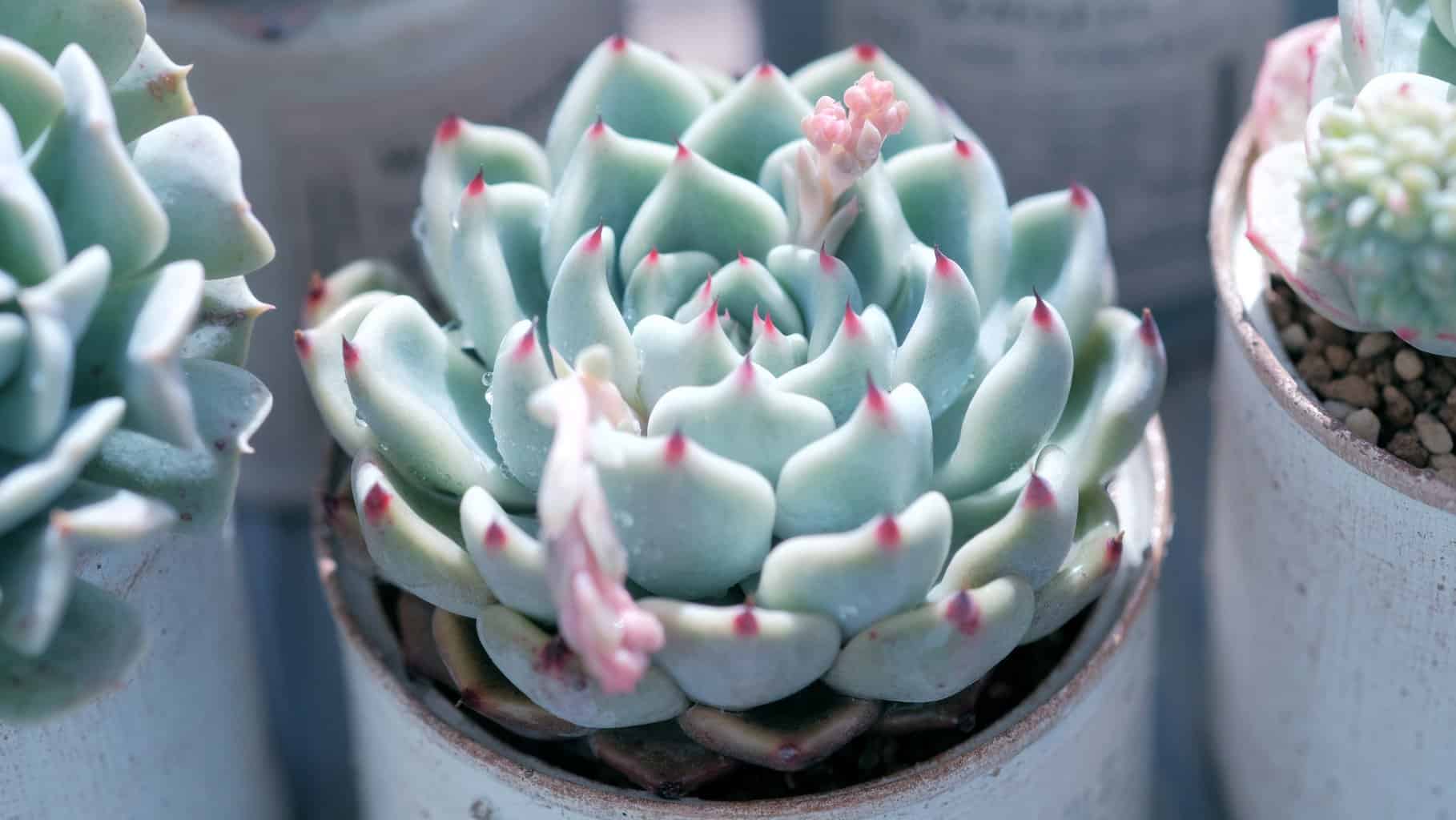
Whether grown indoors or outside in a rock garden, your Echeveria ‘Azulita’ needs six hours of indirect light. So, the best spot is one with partial shade to full sun. The crucial thing is to keep most succulents protected from the afternoon sun.
The reason is that the sun’s intense heat can burn the Echeveria ‘Azulita’ leaves. Still, if you do not have much natural light indoors, we recommend investing in a grow light. When not receiving enough sunlight, your plant starts to stretch, and the leaves wither and die.
So, it helps to keep your plant indoors on a sunny window sill to grow healthy and produce those stunning flowers that attract pollinators.
Watering Requirement
Most succulent plants are drought tolerant as they store water in the leaves and stems. So, your Azulita can survive going without watering for a while. But, the truth is that this small succulent can do with less water than overwatering.
The rule of thumb is to leave the soil completely dry before you water it. Leaving the soil moist and watering is a breeding ground for different bacteria and fungal diseases. The best is the soak-and-dry method.
Also, only water the soil and not above the plant as it is best to leave the leaves and stem dry to prevent rotting.
Temperature & Humidity Needs
Your Echeveria ‘Azulita’ is not a cold hardy plant. Thus, it cannot grow in freezing temperatures. The best with this plant is brought indoors for overwintering. The best temperature indoors and outside is above 30° F.
Once the weather warms up, you can move your succulents outdoors to enjoy the bright light or the sun to partial shade. Another thing about Echeveria’ Azulita’ care is that it is not a humidity-loving plant. Your plant prefers moisture levels below 50%.
Fertilizing of Echeveria Azulita
Another benefit of growing the Sedeae genus is that they are not huge feeders when it comes to fertilizer.
Yet, some added nutrients in a diluted form benefit healthy stem growth and produce blooms. We recommend diluting the fertilizer at half strength and giving it two to four times during the growing season.
Repotting and Pruning

The best time to repot your Echeveria’ Azulita’ is when needed and done in spring or early summer when it grows actively.
Hence, if you see your plant roots poking out a drainage hole, it is time to repot or if the plant’s width starts to spread closer to the sides of the pot.
Another important note is that when your transplant your succulent, the fresh soil needs to be dry. For pruning, succulent lovers will be pleased to know it does not require pruning.
The only time your plant will need trimming is to remove the dead or damaged leaves.
Propagation of Echeveria Azulita
If you do not know what to gift to family and friends, you can easily endow them with this gorgeous plant. You’ll be pleased to see that it propagates easily through stem and leaf cuttings to the many offsets on this plant.
leaf method
With a gentle twist of a healthy leaf, you can remove it from the mother plant. The best is to ensure that you remove the leaf with the limb for it to be successfully propagated.
Leave the leaves to dry for a few days to callous.
Place your leaves on soil that drains well, spreading them evenly.
Moisten the soil and place the container near a window where it can receive partial light for a few weeks until new roots develop.
When you notice new roots developing, you can water them using the soak and dry technique.
Then move the pot to a spot to receive bright sunlight.
Offsets technique
Gently uproot the pups and remove them from the mother plant using a sharp, sterilized knife.
Leave the offsets as with the leaves for a few days to callous.
Then plant them in a solid that drains well in a pot with a drainage hole allowing excess water to drain freely.
Only moisten the soil; for now, spray it with water, and place it in a window to receive sunlight.
Once you notice roots forming and your plants established, you can water as usual and move your succulent to bright light.
Lastly, you can use stem cuttings by choosing a healthy one and cutting it with a sterilized garden shear. Leave some blue-green succulent leaves attached at the top. Then place it in a dry spot to callous and plant in some succulent soil.
Echeveria Varieties
The Echeveria’ Azulita’ is not the only species in the genus, and you can find many other succulents to plant with this gorgeous plant.
Painted Echeveria (Echeveria nodulosa)
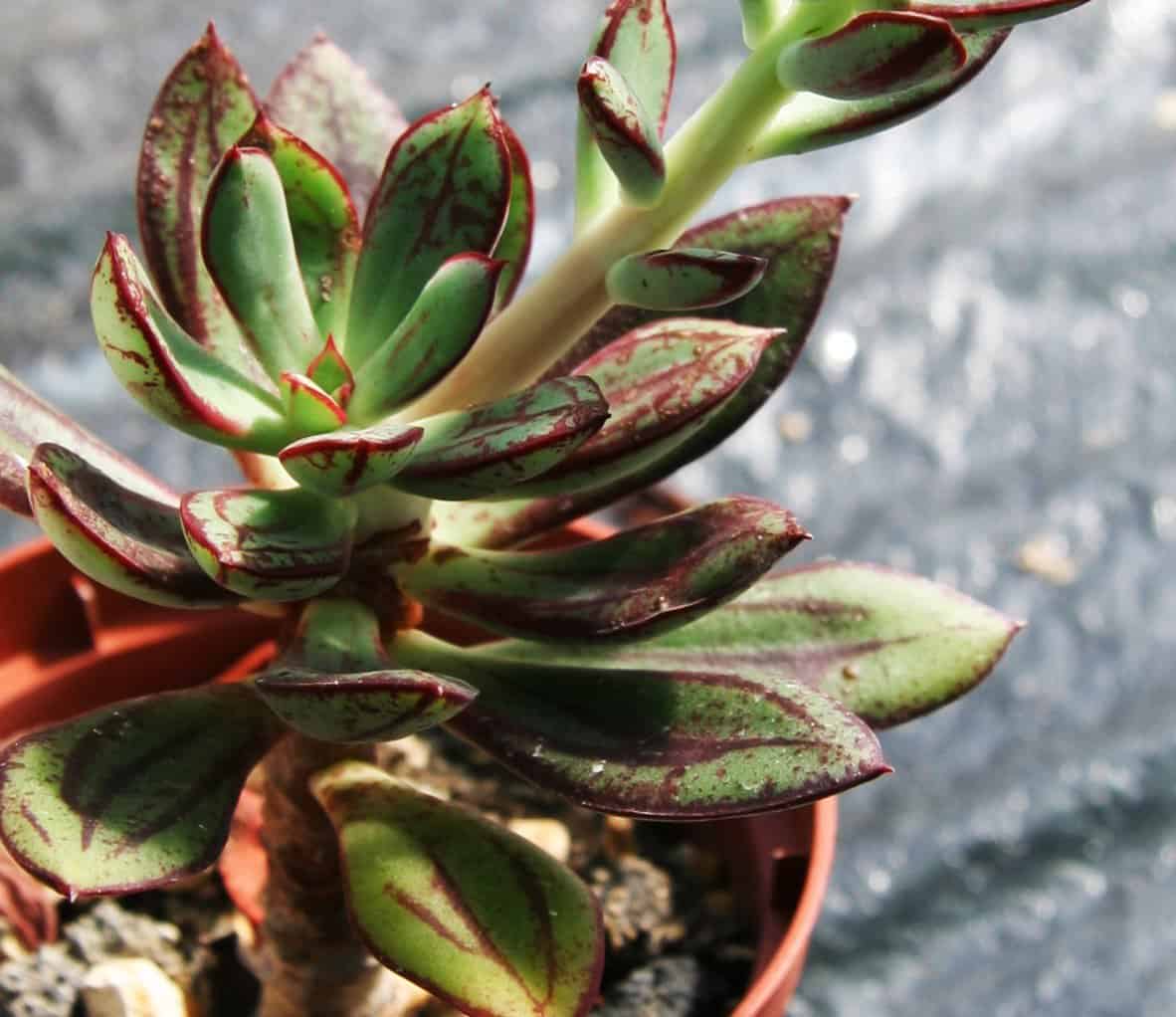
The succulent plant, painted echeveria, is an unusual species with green leaves and vertical red stripes. The succulent plant thrives in the sun and grows up to two feet high with a rosette form.
‘Topsy Turvy’ (Echeveria runyonii ‘Topsy Turvy’)

Here is another unusual succulent plant with a spoon shape blue-green leaf that rolls downwards to give the plant a curved appearance. It is a fast-growing plant to grow in your living space or garden.
‘Neon Breakers’ (Echeveria’ Neon Breakers’)
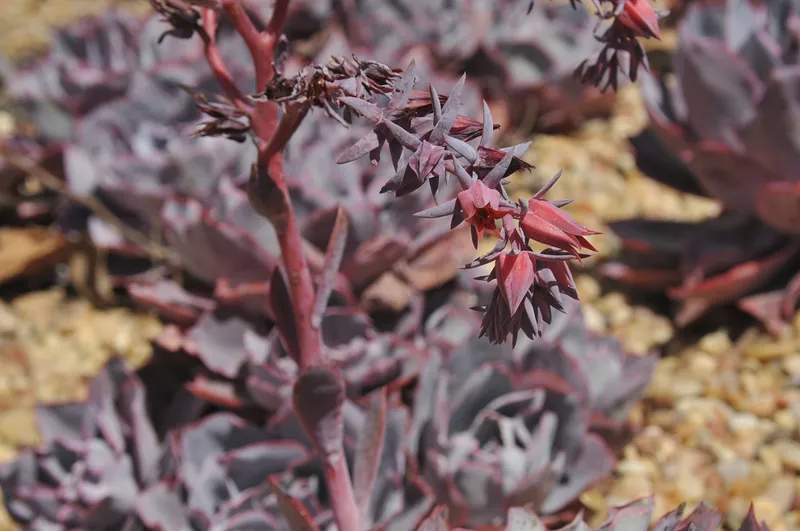
When you leave the Neon Breakers in direct light, the purple leaves with their pink edges become brighter. You can grow them in container gardens or a rock garden. Still, it cannot tolerate overwatering or frost in winter.
Common Problems with Echeveria Azulita
When selecting the Echeveria’ Azulita’ as a houseplant, it helps to be aware of some common problems this succulent can face. First, it can get root rot from overwatering, resulting in mushy leaves that rot.
Secondly, you may notice yellowing of the leaves and may not receive enough light. To avoid the problem, provide your Echeveria ‘Azulita’ with at least six hours of bright light during the day.
If you notice wrinkled leaves or look dead, it can result from underwatering, and once given some water; it will grow healthy again.
Frequently Asked Questions
When looking at the American Society for the Prevention of Cruelty to Animals (ASPCA) list, the plant is not on the list as toxic. So, you can keep it in your home, but if you have curious pets, we recommend keeping them out of reach.
When you care for Echeveria’ Azulita’, it can become the home for scale insects and mealybugs. The bugs thrive on the sap from the plant, sucking out all the nutrients. To remove these pests, you can use neem oil diluted as a spray or a cotton ball soaked with isopropyl alcohol.
Yes, these succulents flower in springtime with pink to bright orange blossoms.
When it comes to Echeveria’ Azulita’ care, it is not that difficult. The good news is that these succulents are reasonably easy to find at your local nursery. The other excellent news is you need not look far, as Plantly has a selection of these succulents and many other gorgeous plants for you to buy.
Whether you want to buy, sell or simply reach out to other plant enthusiasts, Plantly is the right place to be!
In stock In stock Only 1 left in stock In stock
Free Shipping
$39.99
Sold By:
California Tropicals
Hoya Kerrii Variegated 3+Leaves– 4″ from California Tropicals
Only 35 available and it’s in 1 people’s basket Rated 4.96 out of 5 based on 25 customer ratings04
Sold By:
California Tropicals
Free Shipping
$8.00
Sold By:
Chill Hill Farms
Philippine Lily | 100+ Seeds | Lilium Philippinese | Florida Grown
Sold By:
Chill Hill Farms
Free Shipping
$249.59
Sold By:
BONSAI WORLD LLC
Chinese Flowering White Serissa Bonsai Tree of a Thousand Stars
Sold By:
BONSAI WORLD LLC
$29.99
Sold By:
Succulent Oasis
Large Madagascar Palm | A very unique and beautiful cactus
Rated 4.84 out of 5 based on 352 customer ratings00
Sold By:
Succulent Oasis
